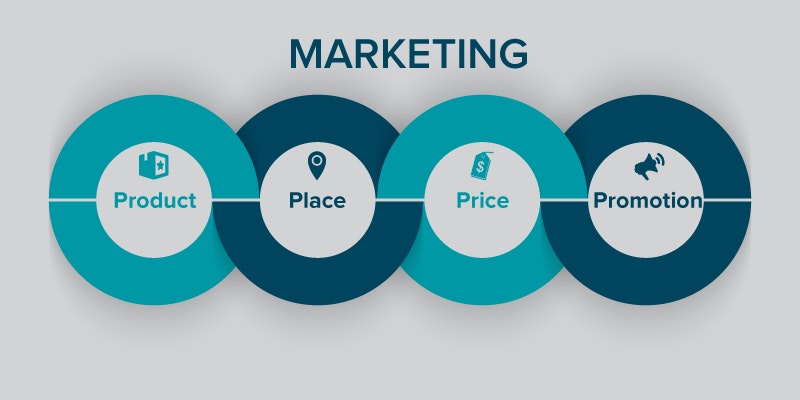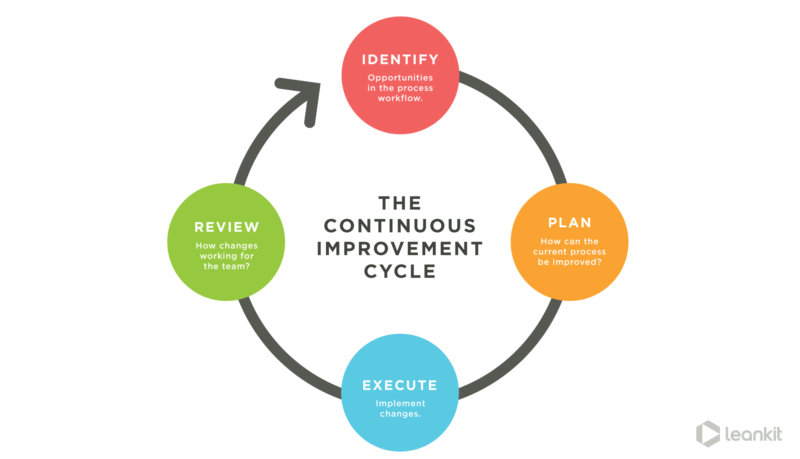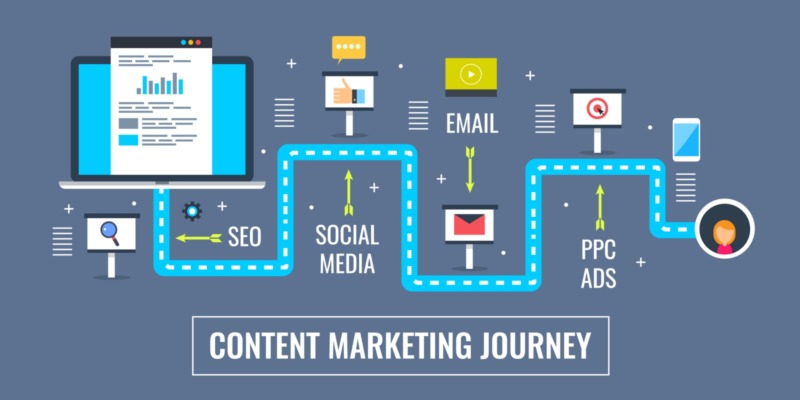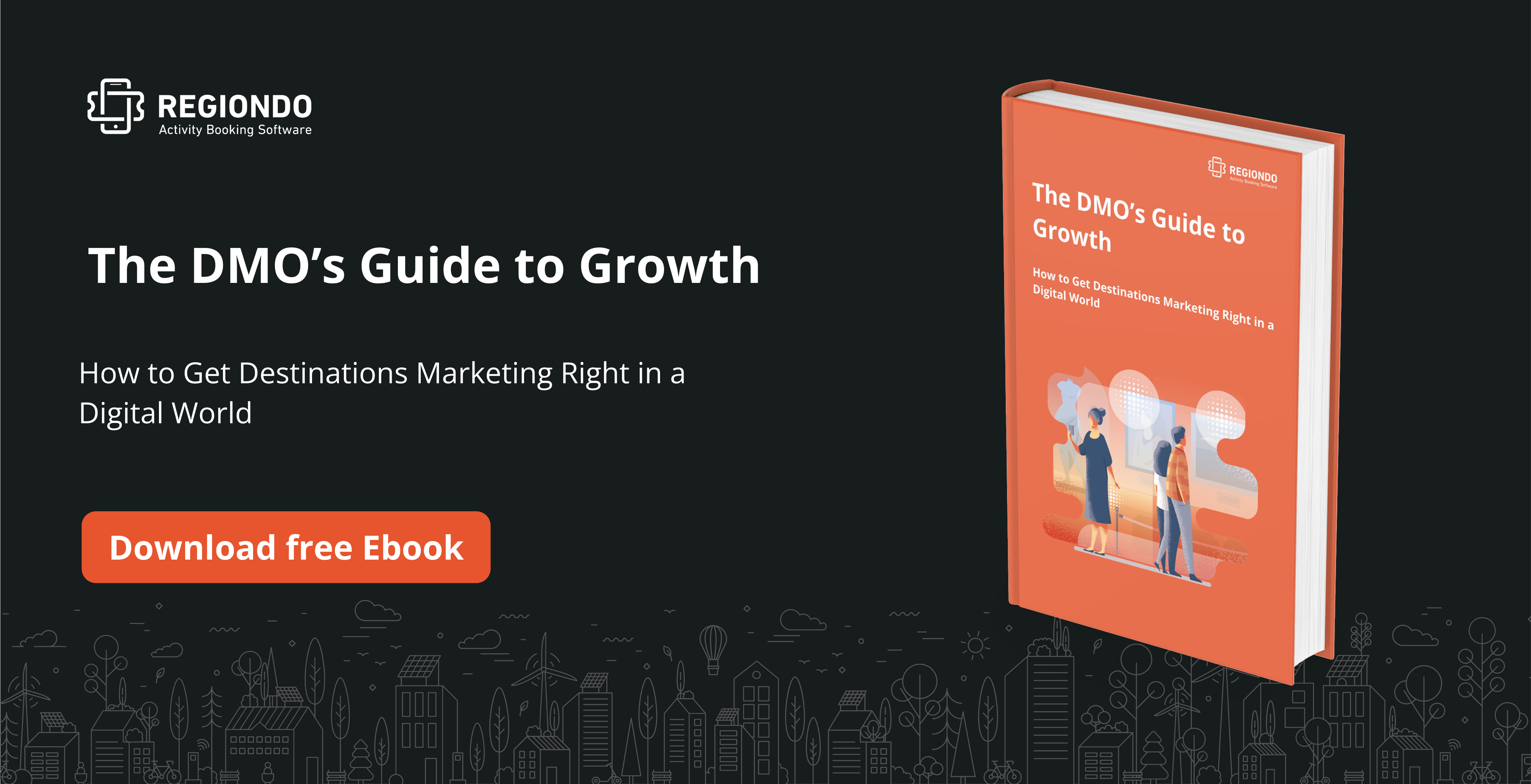Most experts in the field will tell you that destination marketing is always changing.
It’s in a constant state of flux.
And why is that? Well, because end customers are changing their preferences.
In fact, the whole notion of travel has changed in recent years. There are many more reasons to travel than going on vacation.
Nowadays, people travel for work, for studies or just a short weekend trip.
So travel is wider spread, more affordable, and frankly, people are a little bored of the traditional stuff.
They are now looking for transformational experiences. They want to grow and enlighten themselves. And many, still, want to just tick countries off their list.
And these changes bring new challenges for destination marketing organizations (DMOs).
- How do you justify the ROI on your activities before funding bodies?
- What to do you do about issues like overtourism in big cities?
- How do you stand out among increased competition (due to digitization) and shrinking ad budgets?
- How do you get local businesses online so they are better equipped to attract new customers?
So it’s hard to create a balance between your ongoing operations and keep up with new developments.
We created this post to make it easier to navigate the changing world of destination marketing and plan your next steps as a DMO. The article is divided into 4 parts:
- We’ll go back to the basics and explore what destination marketing is and why it’s important for the economy.
- Next, we’ll look at some of the major trends that will shape the future of destination marketing.
- We’ll uncover the strategies that can get you ahead in light of this evolving landscape.
- We’ll look at an example destination marketing campaign that utilizes both trends and strategies to achieve success.
So if you’re running a DMO, we hope this post will help you stay on top of new developments and how to use them to your advantage.
If you’re a new professional in destination marketing, this can be a resource to further your understanding of the field.
Or if you’re just curious, this article can serve as an introduction to the world of destination marketing.
Ready? Let’s go.
What is destination marketing?
Destination marketing is a branch of marketing focused on promoting a specific city, region, or country. The main goal of destination marketers is to increase the number of visitors in a given location.
And it’s not just about tourists.
Destination marketing could also attract students, skilled workers, or investors.
It works primarily at the top of the funnel, aiming to educate people about a location before they take next steps such as booking a flight or accommodation.
Ultimately, DMOs work to improve the well-being of locals and tourists alike by growing the economic value of domestic and international arrivals.
Okay, enough with the textbook definitions and on to more practical stuff.
There’s evidence that growing the number of visitors to a location leads to an increase in employment rates, among other benefits.
This puts DMOs in a unique position compared to other marketing organizations.
Due to an overlap in interests, DMOs have traditionally been affiliated with governments, benefiting from public financing and other perks.
However, this is changing.
Following the financial crisis from the late 2000s, many countries implemented austerity measures which directly influenced funding options for DMOs.
So nowadays, it’s important to find opportunities to become (and stay) self-sustainable.
As budgets shrink, it’s time to revisit and even reinvent the DMO model.
But even if your country is doing well and you have adequate access to financing, there’s a bigger underlying movement pushing DMOs to evolve.
Marketing vs Management
You may often see the term “destination management organization” rather than “destination marketing organization”. So what’s the proper use?
The answer is both.
Due to digitization, DMOs now have less influence over a destination’s marketing mix (also known as the 4 Ps – Product, Place, Price, Promotion).

Source: RadioCampus
Specifically, word of mouth has largely moved online and people trust reviews on third-party sites like TripAdvisor more than anything you could say about your country and attractions.
In addition, DMOs have little or no control over Price and Place which are factors outside their scope.
This leaves the last of the 4 Ps – Product.
In order to maintain healthy and sustainable tourism, benefiting society as a whole, DMOs are starting to focus on product and brand management. Meaning they define and regulate tourism products and create a compelling image of their country, city or region.
Not only that, but DMOs now have an expanding role that requires them to take leadership in connecting all stakeholders: the public and private sectors, the local community, and the end customers.
So it’s not just marketing anymore.
This is why it’s crucial for DMOs to redefine themselves and make a big effort towards utilizing the resources at their disposal in new ways.
How exactly?
This depends on multiple factors, including your unique operational environment and the trends shaping destination marketing.
Key destination marketing trends
Now that we looked at what destination marketing entails, let’s explore some of the key trends in the field. This way, you’ll have a solid basis for planning your approach.
Public-Private shift and discovering new business models
In reality, it’s still difficult to prove the ROI and the need to fund DMOs. They typically operate at the top of the funnel and customers are likely to go through several other stages before spending a dime.
This makes it hard to attribute a particular section of new tourism revenue coming as a direct result of DMO efforts.
In addition, we have the issue with shrinking budgets mentioned above, which is especially noticeable when it comes to advertising spend.
So many DMOs are expanding their activities and decreasing their reliance on government support.
And that means operating more like a business than a public sector organization.
So DMOs increasingly look for new ways to generate revenue and become self-sustaining.
For example, some DMOs sell tours, activities, and accommodation straight on their website and generate a commission this way (learn how to do this yourself by clicking the image below).
In the end, becoming self-sustainable and shifting your approach can be both good and bad.
True – it’s less money to spend but it also gives DMOs more freedom and ability to move quickly, regardless of when budgets are released and their allocation requirements.
And as government plans and promises often don’t go into action, generating revenue and building your own future is all the more important.
Consolidation of DMOs and cross-industry partnerships
So how can DMOs survive and thrive without as much government support?
Many organizations see consolidation as the answer to this question.
As government funding options decline, some DMOs merge or partner with other organizations to gain access to new resources and capabilities.
That’s the case with London & Partners (London’s DMO) which is a successor company to 3 organizations: a private company that aims to attract foreign investment; a government tourism agency; and an international student attraction office.
The idea here is to benefit from potential synergies and complementary resources.
So one of the key trends we see and anticipate is that of growing consolidation between organizations that serve the community through tourism, such as DMOs and EDOs (Economic Development Organizations).
Digitization
I’ll admit that digitization can’t be classified as a new thing anymore.
However, the transition to digital in DMOs is slower compared to other tourism organizations.
So one of the key trends right now is switching to digital modes of promotion and operations, adopting an online-first mindset to keep up with changing customer demands.
This brings both challenges and opportunities for DMOs.
On one hand, it’s necessary to remain competitive and requires a new set of skills and a shift in perspective.
On the other, digitization brings the ability to reach more people with a personalized experience while reducing operational costs when used internally.
So many DMOs have adopted a digital mindset when it comes to promoting their destination and achieving higher operational effectiveness.
In fact, new developments in data analytics and the way people consume content (especially video) have had a big impact on some organizations and others are taking notice.
Specifically, we can highlight the move from mass media advertising like TV and radio ads to digital such as search ads and social media.
Ideas and strategies to grow your DMO
Now that we looked at some of the major trends, it’s time to see how to address them in the best possible way. Below we’ll outline some of the best destination marketing strategies and approaches you can implement to grow your DMO today.
The lean mindset
In light of shrinking budgets, it’s important to use all resources to their maximum capacity and minimize your costs.
The lean methodology says you should strive for continuous improvement and avoid waste along the way.

Source: LeanKit
This concept was first introduced by Toyota to improve their manufacturing processes.
However, you can employ part of the principles or at least develop and implement the lean mindset in your DMO.
How can you do that?
First, analyze your existing processes and try to spot things that don’t work well. Your goal here is to eliminate process hurdles that may be slowing you down or costing you unnecessary time and money.
Second, try to focus on low-cost, low effort projects that bring you a high return (on time and other resources). The key here is making small, incremental improvements that add up to big changes over time.
For example, one of the ways to cheaply and quickly improve your performance is by updating your website to maximize conversions. With just a few tweaks to your text and graphics, you can increase the portion of people who take a specific action on your website (such as downloading a marketing asset or booking a tour).
Another example is optimizing your website for mobile screens. As more and more people consume content on their smartphones, it’s a relatively easy fix that brings a lot of benefits in a short period of time.
As you make these small tweaks, you will have the ability to see them in action and collect feedback before making any major changes in one go.
These are just some examples of the “lean mindset” in action – that is a specific worldview in management that strives to eliminate waste, improve processes on an ongoing basis, and prioritizes speed of operation.
Travel is social
One of the key developments for DMOs in recent years has been social media.
So this strategy is based on a sharp focus on promotion through Facebook, Instagram, and YouTube.
The main idea is to utilize the reach of these services as they fit perfectly with the DMOs’ focus on top of the funnel activities.
This strategy is all about turning your DMO into a social media rockstar with many engaged followers that actively promote your brand.
The important thing for this strategy is to stay consistent and always provide value to your followers. It may take years before you develop a substantial following but given the reach of some social networks, it can give you great benefits.
One thing to note here is this strategy is rather risky. If a social network changes it’s algorithms (and they often do) or worse, shuts down (which many have), your hard work may go to waste.
This is why we’d recommend this strategy only in combination with a stellar content production setup.
Special mention: Instagram
In recent years, Instagram has turned into the big name of social networks in travel. With its stories, IGTV, and hashtags, Instagram has changed the way people consume content, and they even did it within their own social network (shifting from square images to full-screen vertical videos). So if you go for this strategy, consider Instagram is the cornerstone of your efforts.
The content machine

Source: ReputationDefender
This is not really an optional strategy.
Producing content about your destinations should be, and probably is, your main focus already.
That said, there are many things that can go wrong with your content production. And there are many decisions to be made.
How much content do you produce? What’s the topic? How do you improve its quality? What sort of format should it be in?
The Content Machine strategy leans on a few basic principles:
- Quality over quantity – substandard information will get you substandard results, wasting your time and efforts.
- Video as the pillar – video has proven to be the best way of promoting destinations and brings a number of other benefits too (more below).
- Experiences over “things” – people look for crazy and interesting experiences that they’ll remember for a lifetime, not the biggest shopping mall.
- Stellar data-driven process – deciding what works and what doesn’t should happen based on facts, not assumptions.
So once you put the above into practice, you’ll have the basis for all of your promotional efforts. In fact, through your website, you’ll be able to grow your own platform for producing and promoting content instead of relying on third parties like social networks.
The key thing to mention here is video marketing.
As the king of travel promotion, you should consider video as the main part of your content plan. Not only is it more effective (in most situations), but it also gives you the basis to create other types of content. Take this, for example:
You start by shooting a video of a traveler who recently visited your destination. They talk about their experience and what they did.
Next, you transcribe the video, edit and publish it as a blog post.
Third, you can extract the audio and use parts of that as a radio or podcast advertisement.
Finally, you can take a certain sentence and use it as a testimonial or add it to a supplier/business page that you promote on your website.
This is just one example of how you can create maximum impact and reach more people with minimal effort.
There are also other interesting things you can do such as:
- Creating a local guide.
- Take and share good, expressive photos.
- Add a News section to your website.
- Or turn to the movie industry – check out the impact of “Crazy Rich Asians” on Singapore’s popularity.
That said, the strategies above are not meant to be used in isolation. The best way to utilize them is by choosing one specific focus and combining different elements (or tactics) together based on your unique market position and operational environment.
Destination marketing campaigns in action: VisitDenmark and Icelandair
To illustrate the effective use of recent trends and strategies, let’s look at the collaboration between VisitDenmark and Icelandair.
To start with, VisitDenmark knew that their biggest visitor market is the United States with more than 709,000 room nights booked in 2017. Making use of developments in data analytics, they also found out that nearly 9% of U.S. travelers in Iceland also visited Copenhagen.
As both countries offer stunning natural and urban experiences, VisitDenmark and Icelandair collaborated on a video (below) highlighting their respective strengths. What’s interesting is that they created and promoted the video campaign as a single, multi-city trip to both destinations.
This illustrates how DMOs partner with other organizations with similar interests, in addition to the effective use of content marketing.
Lastly, as they were conscious of their costs, VisitDenmark and Icelandair compromised by removing non-critical elements of the video such as voice narration – a good example of the lean mindset in action.
As a way to make use of social media promotion, they also rolled out a 30-second version of the video meant for advertising on platforms like YouTube.
And this is just one example of employing the various strategies and tactics above to demonstrate the principles in action.
Conclusion
In this article, we looked at what destination marketing is and where it’s going in the future.
We highlighted the shift from marketing to management, reiterating the role and importance of destination marketing for the economy.
Some of the developments we see and expect are growing consolidation efforts; a switch from public funding to self-sustainable business models; and increasing use of digital technologies, especially in the fields of data analytics and advertising.
To face new challenges, we also looked at several common strategies. These include developing a lean mindset, a stellar content production process and an eye towards social media domination.
Lastly, we looked at a sample campaign from VisitDenmark and Icelandair which demonstrates some of the principles we talked about in action.
This blog post is part of our series on destination marketing. You can find the rest of the articles below:
- 10 Destination Marketing Strategies to Help You Grow Quickly
- 8 Tips for Successful Destination Branding
- How to Use Social Media for Destination Marketing
- The Top Destination Marketing Trends in 2020 and Beyond
- 4 Destination Marketing Campaigns to Inspire You In 2020 and Beyond
- The Most Useful Destination Marketing Tools for Any Budget
- 5 Reasons Why DMOs Should Work with Bloggers
- How Destinations Should Position Themselves in the Tours & Activities Market
- Storytelling for DMOs: Make Your Destination Come Alive





